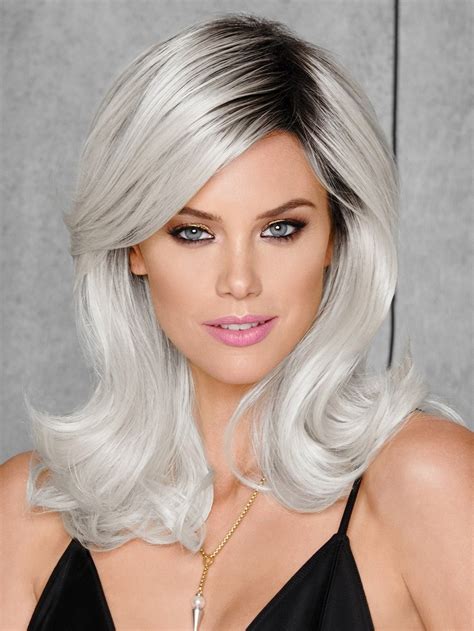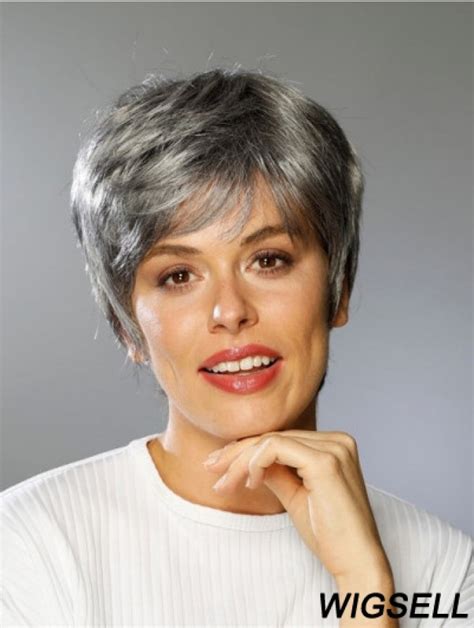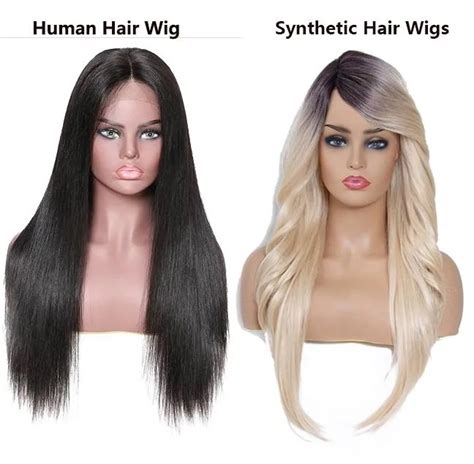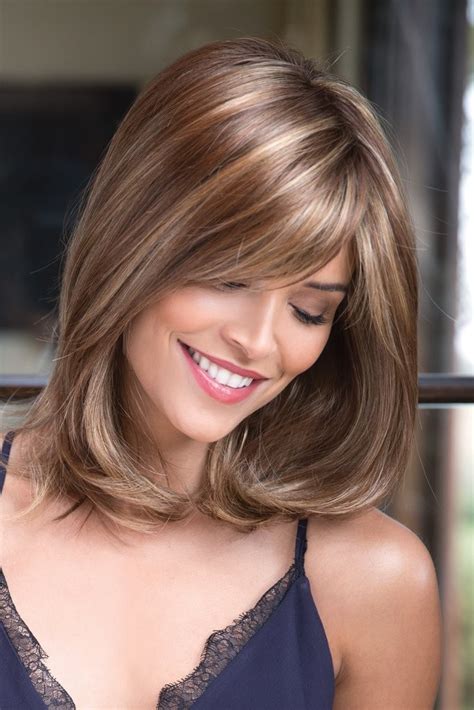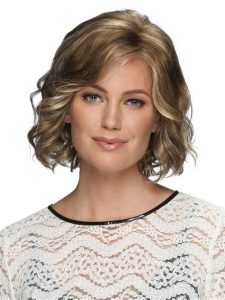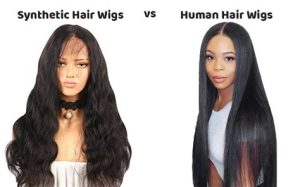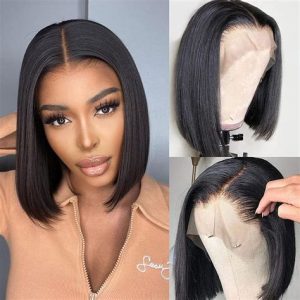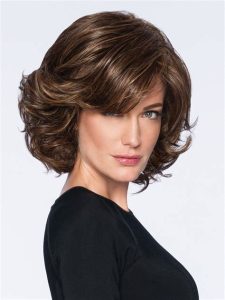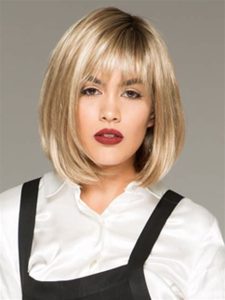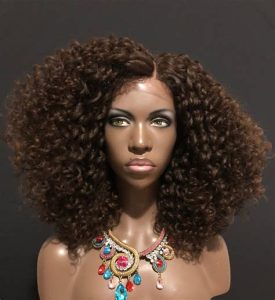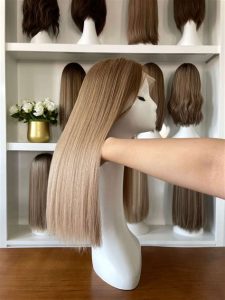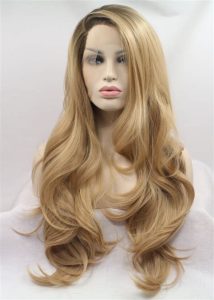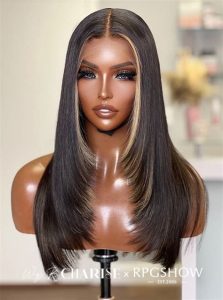6″ VS. 4″ Grey Wigs: The Ultimate Face-Off for 2025
Introduction
In the realm of hair replacements, synthetic wigs have emerged as a popular choice due to their affordability, versatility, and natural-looking appearance. Among the various types of wigs, straight synthetic cropped monofilament wigs stand out for their realistic texture, breathable construction, and easy maintenance. However, the choice between 4″ and 6″ length wigs can be a dilemma for many men seeking a stylish and flattering hair solution. This comprehensive guide will delve into the key differences between these two wig lengths, empowering you to make an informed decision that best suits your individual needs and preferences.
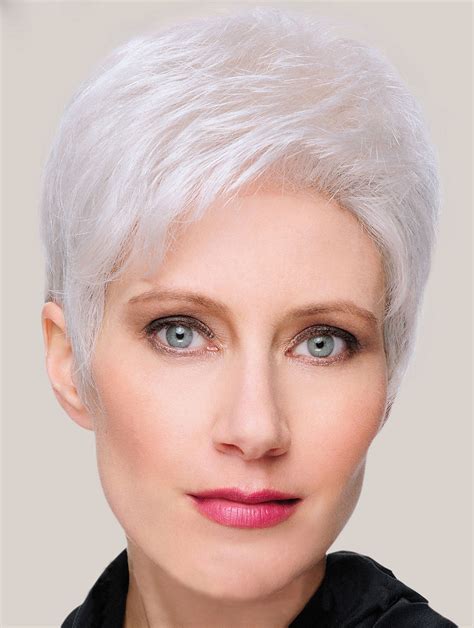
Length Comparison
The most apparent difference between 4″ and 6″ wigs lies in their length. 4″ wigs fall just below the ears, offering a short and manageable style. 6″ wigs, on the other hand, extend to the neckline, providing a longer and more versatile look.
Advantages of 4″ Wigs
- Compact and easy to style: 4″ wigs are more compact, making them easier to manage and style.
- Less hair loss: Shorter wigs experience less hair loss compared to longer ones.
- Suitable for all face shapes: 4″ wigs flatter all face shapes, especially those with a round or oval shape.
Advantages of 6″ Wigs
- More versatile: 6″ wigs offer more styling options, allowing you to experiment with different partings and lengths.
- Can be worn with or without bangs: The longer length allows you to wear the wig with or without bangs.
- Suited for larger head sizes: 6″ wigs provide more coverage and are often preferred by those with larger head sizes.
Texture and Appearance
Both 4″ and 6″ straight synthetic cropped monofilament wigs are designed to mimic the texture and appearance of natural hair. The monofilament base creates the illusion of a natural scalp, while the synthetic fibers are carefully crafted to resemble human hair in both feel and appearance.
Texture
The texture of synthetic wigs varies depending on the fiber type used. Some common textures include:
- Smooth: Straight, sleek, and with minimal frizz.
- Wavy: Loose, natural-looking waves.
- Coarse: Textured, with a rougher feel.
Appearance
The appearance of synthetic wigs has come a long way in recent years. High-quality wigs are virtually indistinguishable from natural hair, thanks to advancements in fiber technology and construction techniques.
Maintenance and Care
Proper maintenance and care are essential to prolong the lifespan of your wig and keep it looking its best. Both 4″ and 6″ wigs require regular washing, conditioning, and styling.
Washing
- Wash your wig every 4-6 weeks, or more frequently if it gets dirty.
- Use a mild shampoo and conditioner specifically designed for synthetic wigs.
- Avoid using hot water, as it can damage the fibers.
- Gently wash the wig by hand and rinse thoroughly.
Conditioning
- Condition your wig regularly to keep it soft and manageable.
- Use a leave-in conditioner or detangling spray made for synthetic wigs.
- Apply the conditioner to the hair and comb through to distribute evenly.
Styling
- Use a wide-toothed comb or wig brush to detangle the hair.
- Avoid using heat styling tools, as they can damage synthetic fibers.
- If necessary, use a low heat setting on your blow dryer or curling iron.
Price Comparison
The price of straight synthetic cropped monofilament wigs varies depending on factors such as length, texture, and brand. Generally, 4″ wigs are more affordable than 6″ wigs due to the reduced amount of material used.
Which Length is Right for You?
The choice between 4″ and 6″ wigs ultimately depends on your individual preferences and lifestyle. Here are some factors to consider:
- Face shape: 4″ wigs suit most face shapes, while 6″ wigs are more flattering for oval or elongated faces.
- Head size: 6″ wigs provide more coverage and are better suited for larger head sizes.
- Hair texture: 4″ wigs are easier to manage if you have thin or fine hair, while 6″ wigs offer more versatility for thicker hair types.
- Personal style: If you prefer a short and low-maintenance style, a 4″ wig may be a better choice. If you desire a more versatile and longer style, a 6″ wig is more suitable.
Conclusion
Choosing between 4″ and 6″ straight synthetic cropped monofilament wigs requires careful consideration of your individual needs and preferences. By understanding the key differences between these two lengths, you can make an informed decision that will provide you with a natural-looking, comfortable, and stylish wig solution. Remember to consult with a reputable wig supplier or stylist for professional advice and to explore the latest advancements in wig technology.
Additional Tips and Tricks
- Use a wig stand to store your wig: This will help maintain its shape and prevent tangling.
- Avoid brushing your wig when it’s wet: This can cause the fibers to break and become frizzy.
- Use a detangling spray to remove knots: This will help keep the hair smooth and manageable.
- Store your wig in a cool, dry place: This will prevent the fibers from becoming damaged or discolored.
FAQs
- How often should I wash my wig? Every 4-6 weeks, or more frequently if it gets dirty.
- Can I use heat styling tools on my wig? Avoid using heat styling tools, as they can damage synthetic fibers.
- How do I store my wig? Use a wig stand to store your wig and keep it in a cool, dry place.
- Can I cut my wig? Yes, but it’s recommended to consult with a professional wig stylist to avoid damaging the wig.
- How do I prevent hair loss from my wig? Wash and condition your wig regularly, avoid using heat styling tools, and store it properly.
- How long will my wig last? With proper care and maintenance, a high-quality wig can last for up to 2 years.
Current Status and Future Prospects
The market for synthetic wigs is growing rapidly, driven by factors such as affordability, natural appearance, and versatility. Advancements in fiber technology and construction techniques are constantly improving the quality and durability of wigs, making them a viable alternative to natural hair.
Future Applications
The future of synthetic wigs holds exciting possibilities:
- Personalized wigs: Wigs tailored to individual scalp contours and hair patterns.
- Smart wigs: Wigs with built-in sensors that monitor hair health and provide personalized styling recommendations.
- Biodegradable wigs: Wigs made from sustainable and environmentally friendly materials.
By embracing innovation and leveraging technological advancements, the synthetic wig industry is poised to offer even more realistic, comfortable, and stylish solutions for individuals seeking hair replacement options.
